Art World
Archaeologists in Pompeii Have Discovered an ‘Enchanted’ Shrine Covered in Gorgeously Preserved Frescoes
The Great Pompeii Project's conservation work has yielded another impressive discovery.
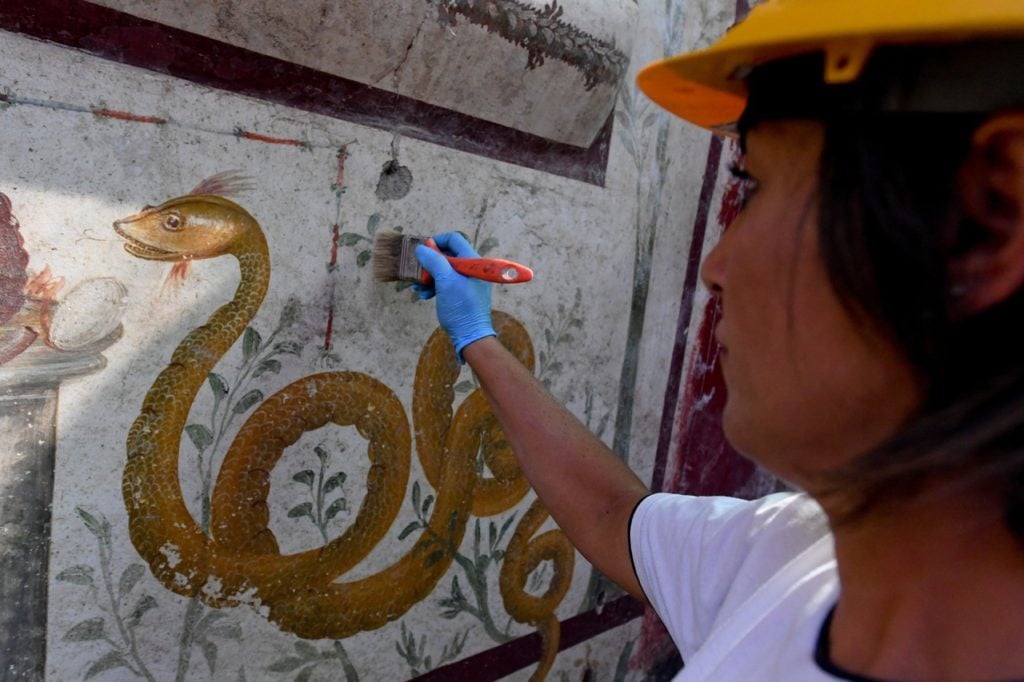
The Great Pompeii Project's conservation work has yielded another impressive discovery.

Pompeii is the city that keeps on giving. More than two hundred and fifty years after the ancient Roman town was discovered buried under a heap of volcanic ash, the archeological finds show no sign of abating. Now, archaeologists for the Great Pompei Project have uncovered yet another impressive discovery: an ancient shrine, or lararium, covered in gorgeously preserved frescoes, in a 16-by-12-foot room containing an altar, a garden, and a small pool.
The Italian media has dubbed the new room, which would have been partially covered by a tile roof, “the Enchanted Garden.” The figures in the paintings include two serpents, a wild boar fighting unidentified creatures against a blood-red backdrop, and a mysterious man with the head of a dog that may have been inspired by the Egyptian god Anubis. In front of a painted peacock, strolling through the plants, there would have been a planted flower bed, extending the illusionistic decorative design into the real world.
“It is the first time that such complex decoration has been found in a space dedicated to worship inside a house,” Massimo Osanna, the director of the Parco Archeologico di Pompei, told the Wall Street Journal, praising the find as exceptional.
“Every house had a lararium of some kind,” Ingrid Rowland, a professor at the University of Notre Dame and the author of From Pompeii: The Afterlife of a Roman Town, told the New York Times. But “only the wealthiest people could have afforded a lararium inside a special chamber with a raised pool and sumptuous decorations.”
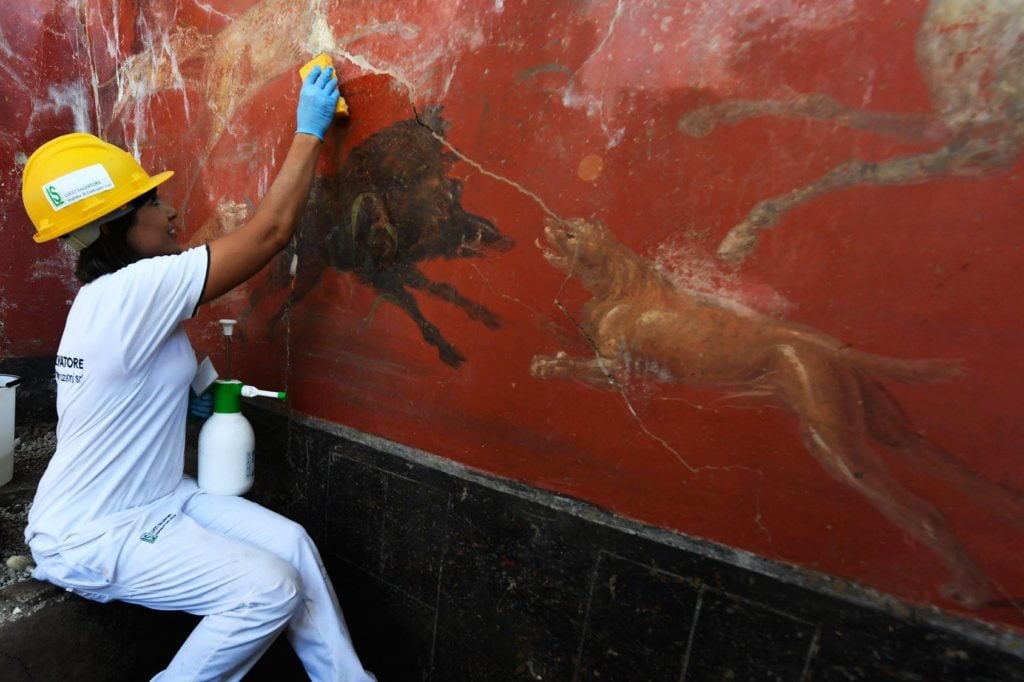
Pompeii’s newly discovered Enchanted Garden room. Photo by Ciro Fusco courtesy of Pompeii Parco Archeologico.
After clearing out the volcanic rock fragments, or lapili, that had buried the room for almost two millennia, archaeologists found an altar decorated with eggs, a symbol of fertility. There are burnt remains, which archaeologists believe may have contained food offerings, such as eggs, figs, or nuts, to fertility deities. The altar is flanked by paintings of the Roman gods of household rituals.
The ashes of Mount Vesuvius, which erupted in the year 79, left the ancient city Pompeii remarkably intact. Unexposed to sunlight and water, the city’s murals and mosaics never faded, and its richly decorated homes remained untouched for centuries.
But new excavations are much more careful than the original explorations of the site, which began in 1748. Without modern technology and techniques to aid their excavations, early archaeologists could be quite destructive. The new discovery helps provide a better understanding of what the early excavations would have looked like when first uncovered. (About a third of the site remains buried in the ashes, with no immediate plans to excavate it.)
Since 2011, Italy has been carrying out much-needed preservation and restoration work to preserve the UNESCO World Heritage Site. The Great Pompeii Project, an initiative aimed at stemming the deterioration of the ancient structures, had an initial budget of €105 million ($140 million). Despite difficulties, work is back on track after a 2015 restoration deadline was pushed back to make sure work, such as the restoration of the frescoes in the Villa of Mysteries, would continue. The discovery of the “Enchanted Garden” represents perhaps the project’s greatest success thus far.
Other discoveries have been made at the site in recent years: A group of five young skeletons belonging to victims of the blast was uncovered in June of 2016, and this May, researchers discovered a headless man thought to have been killed by a flying rock as he attempted to flee the eruption. The lararium was uncovered as a byproduct of efforts to stabilized lava and pumice walls around the excavations, which sometimes reach 16 feet in height.
Earlier this month, as reported by Forbes, a team of Italian researchers published a study in the journal PLOS One suggesting that some victims of Vesuvius may have died when their skulls exploded due to the extreme heat. And in yet another unexpected twist, Italian officials on Tuesday announced that volcanic eruption that destroyed the ancient city most likely took place two months later than previously thought. Traditionally, historians have dated the disaster to August 24 79 AD, however, excavations on the site recently uncovered a charcoal inscription written on a wall that shows a date corresponding to October 17.
See more photos of the Enchanted Garden room below.
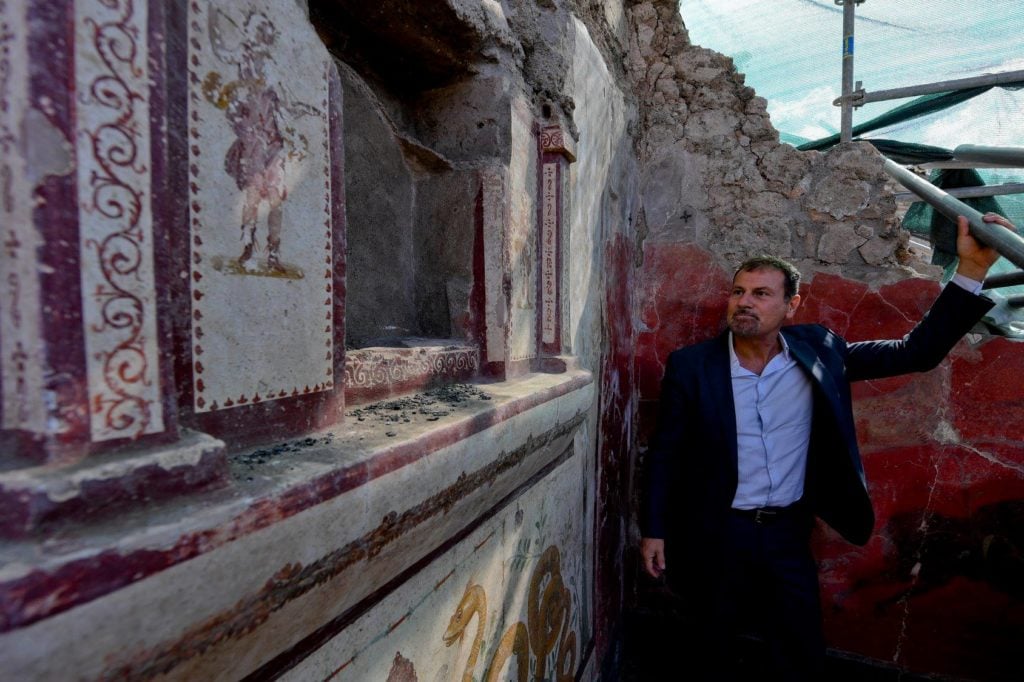
Massimo Osanna, director of the Pompeii archaeological site, in the newly discovered Enchanted Garden room. Photo by Ciro Fusco courtesy of Pompeii Parco Archeologico.
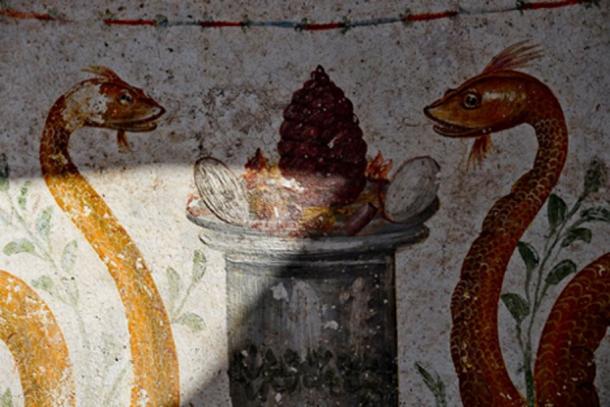
Pompeii’s newly discovered Enchanted Garden room. Photo by Ciro Fusco courtesy of Pompeii Parco Archeologico.
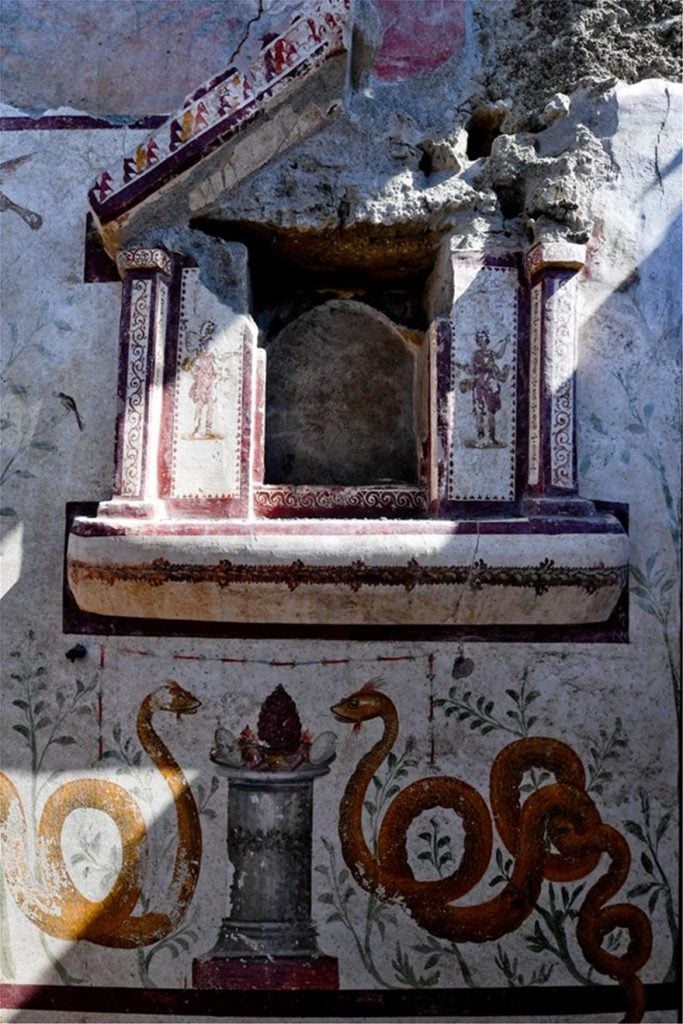
Pompeii’s newly discovered Enchanted Garden room. Photo by Ciro Fusco courtesy of Pompeii Parco Archeologico.
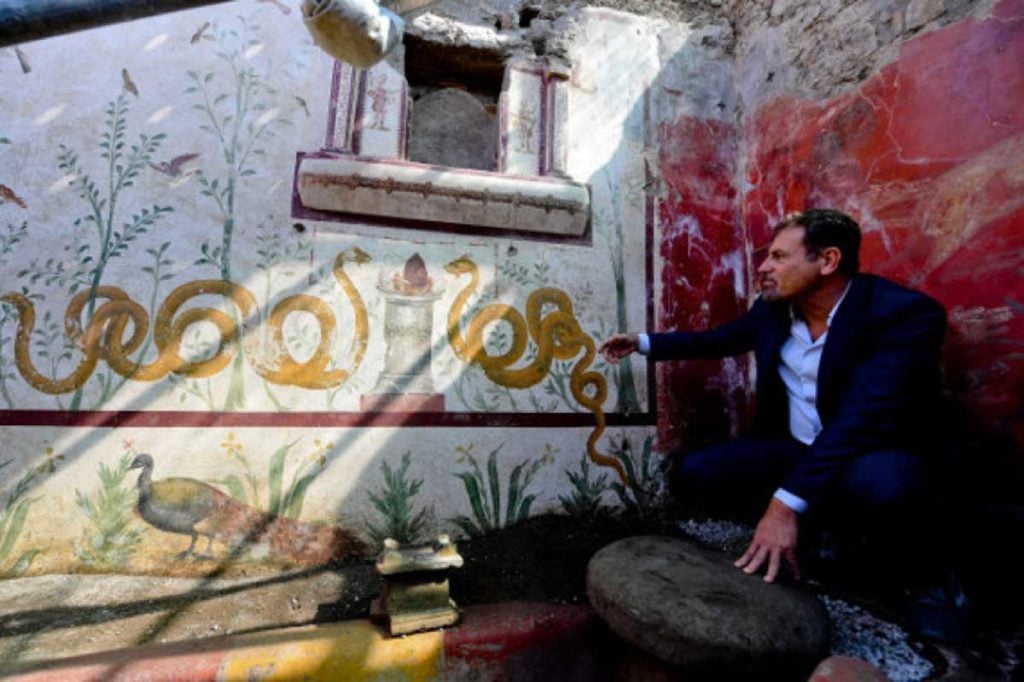
Massimo Osanna, director of the Pompeii archaeological site, in the newly discovered Enchanted Garden room. Photo by Ciro Fusco courtesy of Pompeii Parco Archeologico.